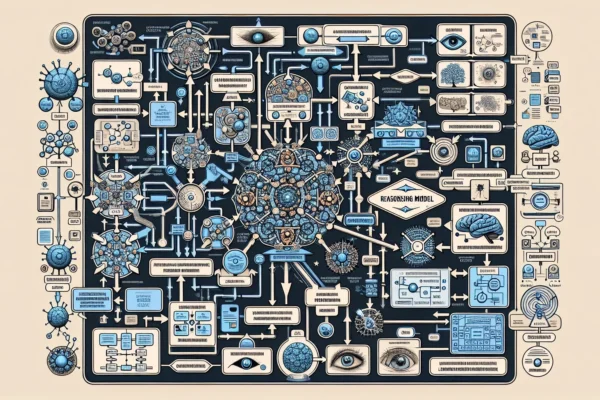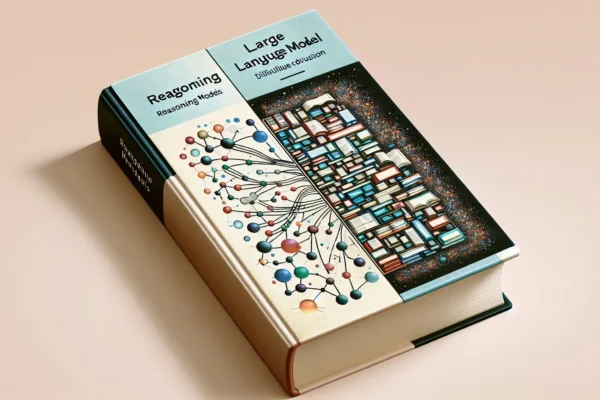Medical AI: Revolutionizing Healthcare – A Deep Dive
I. Diagnostic Prowess: AI-Powered Imaging and Analysis
The field of medical imaging has undergone a dramatic transformation thanks to Artificial Intelligence (AI). AI algorithms, particularly those utilizing deep learning techniques, demonstrate remarkable accuracy in analyzing complex medical images, often surpassing the capabilities of human radiologists in specific tasks. This diagnostic prowess manifests in several key areas:
- Radiology Enhancement: AI algorithms are trained on vast datasets of medical images (X-rays, CT scans, MRIs, PET scans) to identify subtle anomalies indicative of diseases such as cancer, fractures, and cardiovascular conditions. AI can detect micro-nodules in lung cancer screenings, assisting radiologists in earlier detection and improving patient outcomes. Furthermore, AI can reduce false positives and negatives, minimizing unnecessary biopsies and treatments. Companies like Zebra Medical Vision and Aidoc are at the forefront of developing AI-powered radiology solutions.
- Pathology Augmentation: Similar to radiology, AI is revolutionizing pathology. AI algorithms analyze digitized pathology slides to identify cancerous cells, assess tumor grades, and detect biomarkers with increased speed and precision. This helps pathologists make more accurate diagnoses and personalize treatment plans. AI can also quantify immunohistochemical stains, reducing subjectivity and improving reproducibility. PathAI and Paige.AI are leading companies in this space.
- Dermatology Diagnostics: AI-powered applications are emerging to assist dermatologists in diagnosing skin conditions, including melanoma and other skin cancers. These applications utilize image recognition technology to analyze skin lesions from photographs, providing dermatologists with a preliminary assessment and helping prioritize biopsies. Companies like Google and Meta are actively researching AI-driven dermatology solutions.
- Ophthalmology Advancements: AI algorithms are proving invaluable in diagnosing and managing eye diseases such as diabetic retinopathy, glaucoma, and age-related macular degeneration. AI can analyze retinal images with high accuracy, identifying subtle changes that may be missed by human examiners. This enables earlier detection and intervention, preserving vision. Google’s DeepMind has developed AI systems capable of diagnosing over 50 eye diseases with comparable accuracy to expert ophthalmologists.
II. Personalized Treatment Plans: Tailoring Therapies with AI Insights
AI’s ability to analyze vast amounts of patient data, including genomic information, clinical history, and lifestyle factors, enables the development of personalized treatment plans tailored to individual patient needs. This approach represents a significant departure from traditional “one-size-fits-all” medicine:
- Oncology Precision: In oncology, AI is used to identify specific genetic mutations driving cancer growth, allowing oncologists to select targeted therapies that are more likely to be effective. AI algorithms can also predict patient response to different treatments, minimizing exposure to ineffective therapies and reducing side effects. Companies like Flatiron Health are building AI-powered platforms to aggregate and analyze cancer data, facilitating personalized treatment decisions.
- Cardiovascular Care Optimization: AI can predict the risk of cardiovascular events, such as heart attacks and strokes, based on patient data. This allows physicians to implement preventative measures, such as lifestyle modifications and medication, to reduce the risk of these events. AI can also optimize medication dosages and timing for patients with heart failure or other cardiovascular conditions.
- Mental Health Management: AI-powered chatbots and virtual therapists are emerging as valuable tools for providing mental health support. These applications can offer cognitive behavioral therapy (CBT) techniques, monitor mood and behavior, and provide personalized recommendations for managing anxiety, depression, and other mental health conditions. Woebot and Talkspace are examples of AI-driven mental health platforms.
- Drug Discovery and Development: AI is accelerating the drug discovery and development process by identifying potential drug targets, predicting drug efficacy, and optimizing clinical trial design. AI algorithms can analyze vast datasets of biological and chemical information to identify promising drug candidates and predict their interactions with the human body. This reduces the time and cost associated with traditional drug development methods.
III. Predictive Analytics: Anticipating Health Risks and Outbreaks
AI’s ability to analyze patterns and trends in large datasets allows for the prediction of future health risks and outbreaks, enabling proactive interventions to improve public health:
- Disease Outbreak Prediction: AI algorithms can analyze data from various sources, including social media, news reports, and public health databases, to detect and predict disease outbreaks. This allows public health officials to implement timely interventions, such as quarantine measures and vaccination campaigns, to contain the spread of diseases.
- Hospital Readmission Prediction: AI can identify patients at high risk of hospital readmission based on their medical history, demographics, and social determinants of health. This allows hospitals to provide targeted interventions, such as medication reconciliation and home healthcare services, to reduce readmission rates.
- Chronic Disease Management: AI can predict the risk of complications from chronic diseases, such as diabetes and heart disease, based on patient data. This allows physicians to implement preventative measures, such as lifestyle modifications and medication adjustments, to reduce the risk of these complications.
- Personalized Health Monitoring: Wearable sensors and mobile apps, powered by AI, can continuously monitor vital signs, activity levels, and sleep patterns. This data can be used to detect early warning signs of illness and provide personalized recommendations for improving health and well-being.
IV. Streamlining Healthcare Operations: Efficiency and Cost Reduction
AI is transforming healthcare operations by automating tasks, improving efficiency, and reducing costs:
- Administrative Automation: AI can automate administrative tasks such as appointment scheduling, billing, and insurance claims processing, freeing up healthcare staff to focus on patient care. Robotic process automation (RPA) is being used to automate repetitive tasks, reducing errors and improving efficiency.
- Supply Chain Optimization: AI can optimize the management of medical supplies, ensuring that hospitals and clinics have the right supplies at the right time. AI algorithms can predict demand for different supplies, minimizing waste and reducing costs.
- Clinical Workflow Optimization: AI can optimize clinical workflows by automating tasks such as medication dispensing and patient monitoring. This improves efficiency and reduces the risk of errors.
- Virtual Assistants: AI-powered virtual assistants can answer patient questions, provide information about health conditions, and schedule appointments. This reduces the burden on healthcare staff and improves patient satisfaction.
V. Ethical Considerations and Challenges
While AI offers tremendous potential to revolutionize healthcare, it also raises important ethical considerations and challenges that must be addressed:
- Data Privacy and Security: The use of AI in healthcare requires access to large amounts of sensitive patient data, raising concerns about data privacy and security. Robust data protection measures are essential to prevent unauthorized access and misuse of data.
- Algorithmic Bias: AI algorithms can perpetuate and amplify existing biases in healthcare if they are trained on biased data. It is crucial to ensure that AI algorithms are fair and equitable, and that they do not discriminate against certain groups of patients.
- Transparency and Explainability: The decision-making processes of AI algorithms can be opaque and difficult to understand. It is important to develop AI algorithms that are transparent and explainable, so that clinicians and patients can understand how they are making decisions.
- Job Displacement: The automation of tasks by AI may lead to job displacement in certain healthcare roles. It is important to provide training and support to healthcare workers to help them adapt to the changing landscape.
- Regulation and Oversight: Clear regulatory frameworks are needed to ensure the safe and ethical use of AI in healthcare. These frameworks should address issues such as data privacy, algorithmic bias, and liability.
The transformative potential of Medical AI is undeniable, offering solutions to long-standing challenges and paving the way for a future where healthcare is more personalized, predictive, and efficient. Navigating the ethical considerations and addressing the inherent challenges will be critical to realizing the full benefits of this technological revolution and ensuring that it serves the best interests of patients and the healthcare system as a whole.



